This chapter offers you an in-depth look at how to plant various vegetables and the best and worst companion plants to go with them. Remember that most vegetables like a nutrient-rich soil full of well-rotted compost and mulches. Even if the individual plant instructions do not mention this fact, make sure your garden bed is richly prepared before beginning. There are a few vegetables that do well in sandy beds, like carrots, but most do better in well dug over dirt that has been enriched with nutrients in preparation for the long growing season. All beds will also benefit from additional nutrients throughout the growing season.
The following are guidelines you can follow, but take the time to make this fun. Mix up the planting and interplant carrots with beets and radishes or try planting kohlrabi with both to take advantage of the nutrients at the surface level versus deeper root levels. Vegetable gardening can be a fun and rewarding experience.
Asparagus
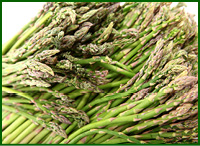
Asparagus prefers to grow in the same spot year after year, so pick a full-sun location for best results or partial shade in a spot where it will not need to be disturbed. You will need to purchase asparagus crowns from your local garden center or nursery catalog. The crown will have a strong root system but the top growth will be dormant. Plant the crowns in early spring for most locations; if you live in a warmer climate, you can plant in late winter. The asparagus will need to be planted deep so make a trench approximately 6 to 7 inches deep. Spread the bottom of the trench with wood ashes or bone meal and compost if you have it. There will be instructions on the asparagus when you purchase it, so make sure you read and follow them.
In general, soaking the roots first, preferably in a compost tea, is a good start. Then lay them on their side in the trench approximately 1 foot apart. Make sure the rows are 3 to 4 feet apart. You will the fill in the trench slowly as the sprouts appear but only cover the stalks and be sure to leave the foliage uncovered. With time, the trench will fill in and the asparagus foliage will now be above ground level. It is important to be diligent with the weeding and you should aim to lay down mulch once the trench is filled in.
Asparagus has many companion plants, including the family of aster flowers, dill, coriander, basil, comfrey, and marigolds, which will deter beetles. Parsley appears to increase the growth of both plants when they are grown together. Tomatoes and asparagus help each other; tomatoes protect against asparagus beetles and a chemical in the asparagus juice deters nematodes from tomato plants. There are no known bad companions for asparagus; however these plants do better when they are not close to onion, garlic, or potatoes.
Beans
There are different types of beans available, like snap, dry, and bush. Some will have different companions, both good and bad. There are some basics that apply to all types of beans. Plant in a full-sun location or partial shade if you live in hot climates. Sow seeds only after danger of frost has past. For scarlet runner beans, which are climbers, supply support of some kind. Thin the seedlings to 5 or 6 inches apart, but leave slightly more space for pole beans.
All beans have the ability to enrich the soil with nitrogen. They all do well when planted with carrots, cauliflower, peas, radishes, potatoes, strawberries, the brassica family, chard, and corn, and they are of great benefit to cucumbers and cabbage. Summer savory is another good companion to beans as it improves the beans’ growth and flavor and deters the bean beetles. Marigolds, rosemary, and nasturtiums also deter bean beetles.
Bad companions for beans include garlic, onion, and shallots as they appear to stunt the plants’ growth. They are not happy planted close to gladiolas. Beans are prone to diseases, but crop rotation will prevent most of them. There are also companions specific to individual types of beans.
Bush beans
Bush beans, a shrub variety of the snap bean, do well with celery if planted at the ratio of one celery plant to six bush beans. Bush beans do well close to celery and leeks but only if there are only one or two bean plants there. If more than this are planted, then none of them do well. Bush beans will give and receive benefits when planted with strawberries and cucumbers. Bush beans are a bad companion to fennel and onions.
Pole beans
Pole beans, a climbing variety of bean like scarlet runner beans, do particularly well with corn, summer savory, and radish. They do not particularly like beets. They make bad companions with onion, beets, cabbage, eggplant, kohlrabi, and sunflowers.
Broad beans
Broad beans, also called fava beans or horse beans, produce large, flat pods with large beans inside. They are excellent companions for corn, potato, cucumbers, strawberry, celery, and summer savory. They are bad companions with onions.
Beets
Beets are an easy-to-grow crop that prefers a full-sun location and well-tilled soil with good drainage. They germinate well and will need to be thinned to 4 inches apart with rows at least 2 feet apart. Beets are great for the garden as they add in minerals to the soil.
Beets are good companions for lettuce, onions, kohlrabi, and the brassica family. Mint, garlic (which improves the beet’s flavor), and catnip help beets grow. If you do not want to plant mints around the beets, you can use mint foliage as mulch. Beets are bad companions to pole beans and gives mixed results next to bush beans.
Broccoli
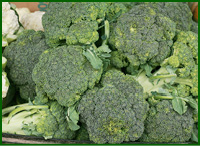
Broccoli grows best in full sun or partial shade in a well-drained soil. In terms of minimizing disease, plant broccoli where no other brassicas (including cabbage, Brussels sprouts, kohlrabi, and cauliflower) have been planted in the previous two years as per crop rotation rules. Broccoli is a large plant and can reach 3 feet in height so the seeds or nursery seedlings should be planted 18 inches apart after danger of frost has passed. If they do not form heads (broccoli florets) properly, they are deficient in lime, phosphorus, or potash. You can purchase these nutrients at your garden center and add them to your broccoli plants.
Broccoli, like all the brassicas, does well with aromatic plants including dill, which improves the plant’s growth and health. Broccoli is a good companion to beets, celery, chard, cucumber, lettuce, onion, potato, and spinach. Flea beetles like broccoli so plant Chinese Daikon and Snow Belle radishes to attract flea beetles away from the broccoli.
Do not plant close to tomatoes, strawberries, pole beans, peppers, or mustards as they are bad companions.
Cabbage
Cabbage needs to spend at least half the time in the shade. You can grow from seed or purchase the plant from a nursery to get a jump on the season. Insects like young cabbages so consider covering the plants with a light-weight cloth when they are first growing. They love compost, fertilizer, and water. If the cabbage’s florets do not form properly, the plant is deficient in lime, phosphorus, or potash and you should purchase some from your local garden supply store to add to your beds.
Cabbage, like all the brassica family, does well with aromatic plants including dill, while sage, peppermint, and rosemary help repel cabbage flies. Celery and dill improve cabbage’s health and growth. Clover will reduce native cabbage aphids and cabbage worm. Other good companions include onions, potatoes, hyssop, thyme, and southernwood. Wormwood repels white cabbage butterfly. Tansy deters cabbage worm and cutworm, and thyme deters cabbage worm. Nasturtium deters bugs, beetles, and aphids from cabbage.
Bad companions for cabbage are strawberries, tomatoes, peppers, lettuce, eggplants, rue, grapes, and pole beans.
Carrots
Carrots prefer full sun and need a very loose, preferably sandy soil for the roots to grow easily downward. If your soil is high in lime, humus, and potash, you will have sweeter tasting carrots. Low nitrogen levels in soil will decrease the flavor of your carrots. Sow seeds directly into the garden several weeks ahead of the last frost (in warm climates you can sow in fall, winter, and spring). Sow seeds around ½ inch deep and thin to 3 to 4 inches apart. Thin early before the roots entwine and be careful to not damage the remaining plants.
Plant onions, leeks, rosemary, and sage to deter the carrot fly. Other good companions include lettuce, onions, chives, beans (which are a good source of nitrogen and can help increase your carrots’ flavor), peas, peppers, radish, and tomatoes. Tomatoes can stunt the carrot’s growth but they will have a great flavor. Bad companions for the carrot are dill and parsnip. If you want to use carrots to attract insects, they need to be able to flower, so plant a few carrots with the intention of leaving them in the ground instead of harvesting them for eating.
Cauliflower
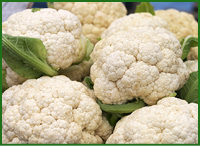
Cauliflower likes a full-sun location in a well-drained soil. Purchase nursery stock to get a jump on the season or sow outdoors after danger of frost has past. Sow in small clusters of several seeds but once they have sprouted, keep only the strongest cauliflower plants. Keep the plants moist when they are young.
For growing instructions and companions, see cabbage as most members of the brassica family have similar growing requirements.
Celery
Celery needs to have a lot of sunshine but can have partial sun for half of the day. Celery requires a rich, moist soil. It is easiest to work with plants from the nursery that you can transplant into the garden when there is no danger of a frost. Plant 8 to 10 inches apart and be generous with compost and water over the growing season.
Good companion plants for celery include beans, leeks, onions, spinach, tomato, and the brassica family. Garlic and chives help keep aphids away from celery. If bush beans and celery grow together, they will strengthen each other. Friends to celery include cosmos, daisies, and snapdragons. Bad companions for celery are corn, lettuce, and aster flowers.
Chard
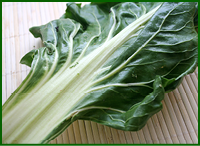
Chard is an easy-to-grow vegetable. It prefers full sunlight unless you live in a hot climate where they prefer partial shade. Well-drained soil with compost helps chard produce well. For most climates, sow the seeds in the spring and thin to 8 inches apart when the seedlings are about 6 inches high. You can either eat these seedlings or transport them to another spot in the garden.
Good companions for chard include beans, brassica family members, and onions. There are no known bad companions.
Corn
Corn likes full sun and a rich, well-draining soil covered in mulch. Sow several seeds in a hill approximately 1 inch deep and 6 inches apart. When seedlings are close to 4 inches tall, thin them to 1 foot apart. Corn needs a steady supply of water and mulch.
Corn helps beans when grown together (as in the Three Sisters example) and sunflowers, legumes, peanuts, squash, cucumbers, melons, amaranth, white geranium, lamb’s quarters, morning glory, parsley, and potatoes all help corn. Marigolds help to deter the Japanese beetle away from corn. Planting radishes around corn and letting them go to seed deters an insect called a corn borer, which is known to be a pest for several agricultural crops. Bad companions for corn are tomato and celery. Pigweed is said to raise nutrients from the deeper earth level to a place where the corn can reach them.
Cucumber
Cucumbers like full sun and can also do well with afternoon shade. Seeds are sown several inches deep a couple of weeks after danger of frost has passed and once the soil has warmed slightly. Plant the bush varieties approximately 1½ feet apart and the vine varieties 2 to 3 feet apart.
Cucumbers have many good companions including corn, beans, sunflowers, peas, beets, and carrots. Radishes can deter cucumber beetles. Keeping dill close to cucumbers attracts beneficial predators and cucumbers attract ground beetles. Nasturtiums improve the cucumbers’ growth and flavor. Bad companions for cucumbers include tomatoes and sage.
Eggplant
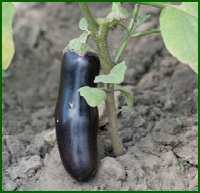
Eggplant loves heat, so plant it where it can have full sun. It is easiest to purchase started plants then transplant them when there is no longer any danger of frost. It is preferable to wait a week or two after frost has passed to allow the soil to warm up. There are dwarf and standard varieties of eggplant. Plant the standard versions approximately 1½ to 2 feet apart and the dwarf varieties can be 1 to 1½ feet apart. Tie the taller varieties to stakes to keep the fruit from touching the ground.
Good companions for the eggplant include amaranth, peas, spinach, and marigolds, which deter nematodes. Eggplant helps beans and peppers. They are good to plant with corn as they deter raccoons from eating the corn and the corn protects the eggplant from a virus that causes wilt. Bad companions for eggplants are pole beans, fennel, and potatoes. There are mixed results when planted with aromatic herbs.
Horseradish
This is an easy plant to grow and will take over your garden in no time. Find a corner away from most of the plants and consider planting horseradish in containers. It is easiest to purchase a small plant from the nursery and it will grow in most conditions. Plant 1 foot apart and bury the top of the root 4 inches below the surface. Make sure you water this plant well.
If you grow this plant in a container, you can move the containers around. Keep 1 plant in the potato patch to deter the blister beetle and help deter Colorado potato beetle. Horseradish also improves the potatoes’ resistance to disease. If you are going to plant it in the potato patch, be sure to dig it up and remove it in the fall to prevent the plant from spreading.
Kohlrabi
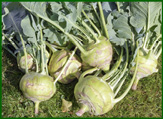
Kohlrabi is a cooler weather vegetable that can be planted for both spring and fall crops. Plant in full sun and in well-drained soil. Sow seeds outside four weeks before the last frost. Plant the seeds ½ inch deep and 3 inches apart but thin them to 6 inches when the seedlings are several inches high, which will not take very long as these plants are very fast growing.
Kohlrabi is a good companion with cucumbers, beets, onions, and chives and appears to help protect members of the mustard family. It is a bad companion to strawberries, tomatoes, peppers, and pole beans.
Leeks
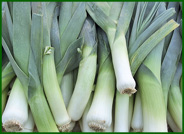
Leeks like a full-sun location that offers well-drained soil. It is easiest to buy leek plants to transplant into the garden around the time of the last frost. Place the seedlings approximately 6 inches apart. Set the plants closer together if you are planting long, thin-stemmed varieties or set them wider apart for thick-stemmed varieties. (Always check the package for specific planting instructions.) Make a hole and set the seedling down so that only an inch of the top of the plant is exposed. Fill it in loosely with soil.
Leeks will improve the growth for celery, onions, and apple trees. Carrots help leeks by repelling carrot flies. Bad companions for leeks are legumes including beans and peas.
Lettuce
Lettuce does best with a mixture of sun and shade. It does not like extreme heat and will need shade during the hottest months or else it will go to seed. Sow the seeds outdoors once the ground has thoroughly thawed and can be worked. If you purchased plants, set them approximately 1 foot apart (this may vary based on the variety so read the label) and sow several times for a lettuce supply all summer.
Lettuce does well when close to radish, onions, kohlrabi, beans (both bush and pole), cucumbers, carrots, strawberries, beets, and sunflowers. Chives and garlic are great deterrents of aphids so plant them close to lettuce. Mints like hyssop and sage repel slugs so plant these plants close to your lettuce if slugs are a problem in your area. Lettuce is a bad companion to celery, cabbage, and parsley.
Onions
Onions are another plant where it helps to purchase plants at a nursery instead of starting the plant from seeds. You can transplant onions into your garden up to two months before the last frost is expected. Any earlier than this and it could be too cold for them. They like a partial to sunny spot and appreciate compost. Make sure the soil is dug over well to allow for good bulb development and weed constantly in the early growth stage as the weeds can crowd out the young onion plants. As the bulbs grow, make sure to keep them covered if they start to push out of the ground.
Good companions for the onion include all the brassicas, beets, lettuce, tomatoes, summer savory, leeks, kohlrabi, dill, lettuce, and tomatoes. Plant onions in the strawberry patch to help the strawberries stay healthy and fight off disease. Pigweed has the ability to raise the nutrients from subsoil and makes them available to the onions. Bad companions for onions are peas, beans, and parsley.
Peas
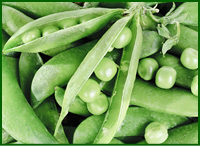
Several types of peas are available for today’s gardener including garden peas, snow peas, and snap peas. They all like a sunny exposure and a rich soil. Sow the seeds in the garden a month before the last frost and make sure there is support, like a trellis, fence, or netting of some kind, ready for them. Plant the seeds 1 inch deep and approximately 3 inches apart in rows and keep 3 feet between rows. Peas germinate quickly and you will need to start the vines twining up the support very quickly. Plant peas several times to keep a fresh supply of peas all years long.
Peas are good companions to carrots, turnips, radishes, cucumbers, corn, beans, celery, chicory, eggplant, parsley, and potatoes. Bad companions for peas include garlic and onions as they stunt the growth of the peas.
Peppers, Bell
Peppers are sensitive to cold so it helps to get a jump on the season by purchasing started plants at the nursery then transplanting them outdoors several weeks after the danger of frost has passed. Set them 1 foot apart in the garden and add in stakes for the varieties that will grow more than 1 foot high. They like full sun and a well-drained soil. You can sprinkle Epsom salts around the plants to supply the magnesium they need for good development.
Good companions for bell peppers are basil, okra, marjoram, parsley, lovage, and carrots. They also do well if planted closely with other peppers and tomatoes as long as the crowded leaves offer the peppers shelter from direct sunlight. The presence of geraniums and petunias also helps peppers. Bad companions include fennel and kohlrabi.
Peppers, Hot
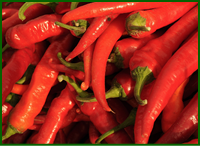
There are many varieties of chili peppers to choose from and most transplant well and fruit heavily. You can sow seeds or purchase started plants from the nursery. Sow seeds in a full-sun location after danger of frost has passed. Peppers need a lot of water but do not let them sit in water. They are fast growing plants and the fruit only takes a week or so to ripen on the vine. The more you pick the plant, the more peppers will grow.
Hot peppers are good companions for chard, cucumbers, eggplant, escarole, tomato, okra, and squash. Companion plants that are good for hot peppers include basil, parsley, oregano, and rosemary. The root of the hot chili plant excretes a substance that prevents root rot and other Fusarium diseases that are responsible for wilt in cantaloupe and muskmelon.
Potato
Potatoes like full sun and a well-drained soil high in phosphorus but low in nitrogen. Nitrogen prevents the potatoes from fully growing their foliage. The ground needs to be well dug 1 foot deep for them to form properly. Plant potatoes a couple of weeks before the last frost has passed. You can plant the seed potatoes whole or cut larger ones into smaller pieces, making sure each piece has several eyes. The simplest way to plant potatoes is to plant them 7 to 8 inches deep and about 1 foot apart from each other (cut side down). The stems will grow up to the surface. For easier harvesting, plant potatoes in a trench and cover with several inches of soil. When the stems are 6 to 8 inches tall, hill mulch around the plant, leaving just the foliage showing. As the plant grows, hill more mulch around it. The potatoes will form inside the mulch.
Horseradish is a plant that will help potatoes. Good companions for potatoes are bush beans, brassicas, carrots, celery, corn, marigold peas, onions, and peas. Flowers that complement potatoes are petunia and marigold, which deters beetles. Bad companions for potatoes include sunflowers, cucumbers, kohlrabi, pumpkin, eggplant, the squash family, turnip, and fennel. Both tomatoes and potatoes are prone to the same blight so keep them apart to avoid contaminating each other.
Pumpkins
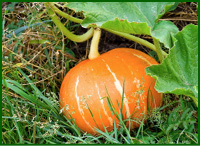
Pumpkin requires a long growing season to allow the fruit to produce and ripen, so it helps to shorten this time by purchasing the plants from the nursery or start the seeds indoors. Plant outdoors three to four weeks before the last expected frost. Pumpkin likes full sun and a light, well-drained soil. Give the plants at least 5 feet of space in every direction as they like to sprawl out. As the vines spread out, you can place the vines in the direction you want them to spread throughout the garden. Once the fruits appear, pinch the vines back so the energy goes into the fruit. Do not harvest the pumpkins until after vines have died but make sure you harvest them before freezing temperatures hit.
Good companions for pumpkins include corn, melon, and squash. Buckwheat, catnip, tansy, and radishes all help pumpkins and they attract spiders and ground beetles, keeping these insects away from the pumpkin. Radishes will keep the flea beetles away; marigolds will deter beetles; and nasturtium will deter beetles and various bugs.
Radish
There are literally hundreds of radish varieties you can plant in your garden. They are all quite simple, easy to cultivate, and can be sown a month before the last frost. Plant seeds in spring or winter (check seed packet for instructions) but plant the seeds ½ inch deep and try to thin to 6 inches apart. You can try spreading the seed thinly then covering it with a mulch. You can plant new sowings every week up until the hot summer months. They prefer cooler weather and intense heat will turn them bitter.
Radishes are a good companion to have in the garden as they deter against cucumber beetles and rust flies. Good companions for radishes include beets, bush beans, pole beans, carrots, chervil, cucumber, lettuce, melons, peas, and spinach. Radish will attract an insect called leaf miners away from spinach yet the leaf miners, although they will eat the radish leaves, do not harm the root from growing. Radishes will deter spider mites when planted close to tomatoes. Radish is thought to protect all members of the squash family from the squash borers. If you plant leaf lettuce close by in summer, it will help the radishes become more tender.
Chervil and nasturtium are known to improve the growth and flavor of radishes with the added value of letting them go to seed to repel squash borers. Bad companions for radishes include cabbage, cauliflower, kohlrabi, broccoli, turnips, and Brussels sprouts as well as the hyssop plant.
Rhubarb
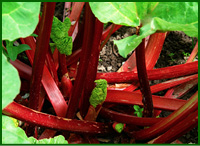
Rhubarb is available in most nursery centers as a crown. It can be planted in early spring as soon as the ground can be worked. Find a location off to one side in full sun so it can grow undisturbed year after year. Plant at least 1 foot deep with at least 3 feet between the plants. Set deep enough in the ground that the new buds are covered by 1 to 2 inches of dirt. When the shoots emerge, place mulch around them. Rhubarb appreciates mulch and compost when available throughout the season. Snap off the seed heads to have the plant continue producing stalks.
Rhubarb is a good companion for the brassica family. You can add any of the family to your rhubarb patch and watch them do well. Rhubarb is a good companion to columbines as it helps deter red spider mites. Rhubarb also helps protect beans against black fly. There are no known bad companions for rhubarb.
Shallots
Shallots belong in the same family as garlic and onions and like garlic. The shallot bulb will grow other bulbs around it. Like onions, you want the soil well dug over and loose for the bulb to form properly. Plant the bulbs roots down with the tops even to the surface and around 8 inches apart from each other.
Good companions for the shallot are the same as for garlic and onions as they grow well with most garden vegetables. Bad companions for the shallot are peas and beans.
Spinach
Spinach is a great cool weather crop so sow for spring and summer harvest or sow in late summer for fall harvest. It will go to seed quickly in intense summer heat. Plant in full sun for cool weather and shadier areas for late summer planting. Sow into the ground as soon as it can be easily dug over and two months ahead of the last expected frost. Sow seeds ½ inch deep and 2 inches apart in rows. This plant can be sown several weeks in a row. Thin seedlings to 6 inches apart with the leaves about 4 inches tall. You do not want spinach to be crowded as that can cause them to run to seed early.
Peas and beans are good companions to spinach as they can take advantage of the shade of the vines’ height. Spinach is compatible with cabbage, cauliflower, celery, eggplant, onion, and strawberries. There are no known bad companions for spinach.
Soybeans
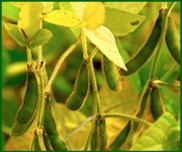
Plant soybeans after the last frost for your area in a full-sun location. Plant seeds 2 inches apart in rows that are 2 feet apart. Soybeans tolerate drought well but they will produce more if they are kept moist throughout the growing season.
Soybeans attract rabbits so only plant them if you are willing to share or if you have a secure, rabbit-proof garden. They are good companions to corn as they add nitrogen to the soil. There is some question as to whether they attract or dispel beetles.
Squash
Squash is one of the easiest vegetables to grow, and with so many colors and varieties available, they offer a lot of interest to any garden. You can start seeds indoors or purchase started plants from the nursery. Read the labels on the seed package for insect-resistant strains that are now available. (You can look on the package to tell whether your squash variety is insect resistant.) Plant in a full-sun location with a well-drained soil several weeks after the last expected frost. Plant two plants together in a hill to the same depth as the pot they are leaving. Plant the hills 3 to 4 feet apart.
You can include a good companion for squash by sowing radish seeds in the hill with the young plants and letting the radishes go to seed instead of harvesting them. Like with cucumbers, radishes will prevent insects on the squash plants. Other companion plants include cucumbers, corn, melon, and pumpkin. Borage will help to deter worms and improve the squash’s growth and flavor. Marigolds help deter beetles and nasturtium helps deter squash bugs and beetles. Oregano provides general pest protection. Squash, like pumpkin, is helped by buckwheat, catnip, and tansy, all of which attract spiders and ground beetles, keeping them away from the squash plants.
Tomatoes
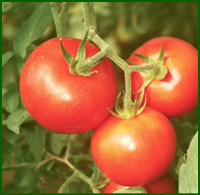
Tomatoes are technically a fruit but as everyone considers them a vegetable, they will be included here. Buy tomato plants from the nursery (or start indoors or in a greenhouse) and plant outdoors after all danger of frost has passed. Tomatoes like heat so give them a full-sun location out of the wind. Like most garden vegetables, they prefer mulch and compost. Dig a large hole (1 foot across) and place compost inside. Set the plants 1 to 1½ feet apart (read the label for more specific instructions). Plant them deep, leaving the top four branches exposed to encourage root development. You can cover young plants with floating covers, which are plastic sheets or tunnels made of special polyester with pores big enough to let in water and air but small enough to keep out insects. These covers help protect plants from wind and cooler temperatures. You can also cut a 6 inch-wide collar or disk with the plant in the center to deter cutworms. Tomatoes require a lot of water so water often and they appreciate compost tea every week for optimum fruiting. Do not water tomatoes from the top – they do better if watered at ground level.
Tomato plants are good companions to roses (protecting them from black spot), peppers, and asparagus (protecting the asparagus from the asparagus beetle). There are many good companions for tomatoes including beans, celery, cucumbers, head lettuce, onion, parsley, and peppers. Garlic between the tomatoes will deter spider mites. Flowers to companion plant with tomatoes include nasturtium, marigolds (as they deter nematodes), and pot marigold (as it deters tomato worm and many general garden pests). Basil will repel flies and mosquitoes along with improving the growth and flavor of the tomatoes.
If stinging nettles are planted close, they will improve the tomatoes’ ability to keep longer after being picked. Borage will deter tomato worms and improve the tomato’s flavor and growth. Dill is only a companion plant to tomatoes until it matures. While dill is young, it improves growth and health of tomatoes, but after it matures, it will retard the tomato plant’s growth. Bad companions include kohlrabi, which stunts the tomato’s growth, and all members of the brassica family. Keep tomato and potatoes apart as they can suffer from similar strains of a fungal disease and can contaminate each other. Tomatoes do well with carrots but the carrot’s growth may be stunted. However, the carrots will have a sweet flavor when planted with tomatoes. You can plant a few close to the tomatoes then plant rows of carrots elsewhere for harvesting. Other bad companions for the tomato include eggplant and peppers (as they share similar blight issues) and fennel, which can inhibit the tomato plant’s growth. Also do not plant tomatoes close to corn as the tomato fruitworm is very similar to the corn earworm and you may end up with both pest problems.
Turnips
Turnips are easy to grow and are easy to store over winter, like potatoes. There are several varieties to choose from, most with similar growing conditions. Turnips like a full sun and well dug, loose soil for the bulbs to develop. Plant the seeds approximately ½ inch deep and 6 inches apart. Plant rows 1 foot apart. Keep the turnips free of weeds, especially when they are young.
Good companions for turnips are peas and vetch, which deter the aphids that tend to plague turnip tops. Bad companions include hedge mustard and knotweed. To minimize pest and disease problems, do not rotate the turnip bed location with the cabbage family.
